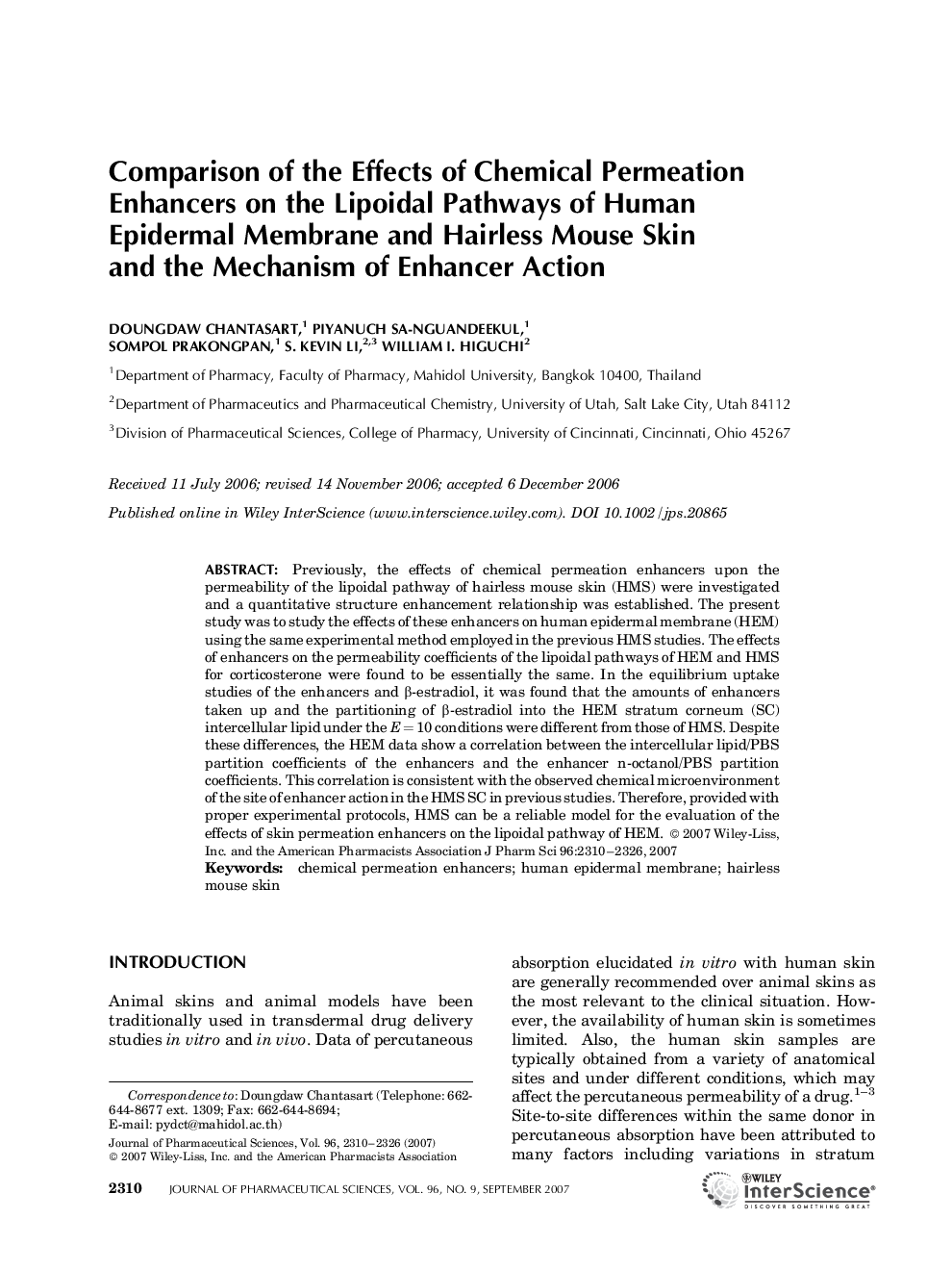| Article ID | Journal | Published Year | Pages | File Type |
|---|---|---|---|---|
| 2487558 | Journal of Pharmaceutical Sciences | 2007 | 17 Pages |
Abstract
Previously, the effects of chemical permeation enhancers upon the permeability of the lipoidal pathway of hairless mouse skin (HMS) were investigated and a quantitative structure enhancement relationship was established. The present study was to study the effects of these enhancers on human epidermal membrane (HEM) using the same experimental method employed in the previous HMS studies. The effects of enhancers on the permeability coefficients of the lipoidal pathways of HEM and HMS for corticosterone were found to be essentially the same. In the equilibrium uptake studies of the enhancers and βâestradiol, it was found that the amounts of enhancers taken up and the partitioning of βâestradiol into the HEM stratum corneum (SC) intercellular lipid under the E = 10 conditions were different from those of HMS. Despite these differences, the HEM data show a correlation between the intercellular lipid/PBS partition coefficients of the enhancers and the enhancer nâoctanol/PBS partition coefficients. This correlation is consistent with the observed chemical microenvironment of the site of enhancer action in the HMS SC in previous studies. Therefore, provided with proper experimental protocols, HMS can be a reliable model for the evaluation of the effects of skin permeation enhancers on the lipoidal pathway of HEM. © 2007 WileyâLiss, Inc. and the American Pharmacists Association J Pharm Sci 96: 2310-2326, 2007
Related Topics
Health Sciences
Pharmacology, Toxicology and Pharmaceutical Science
Drug Discovery
Authors
Doungdaw Chantasart, Piyanuch SaâNguandeekul, Sompol Prakongpan, S.Kevin Li, William I. Higuchi,
